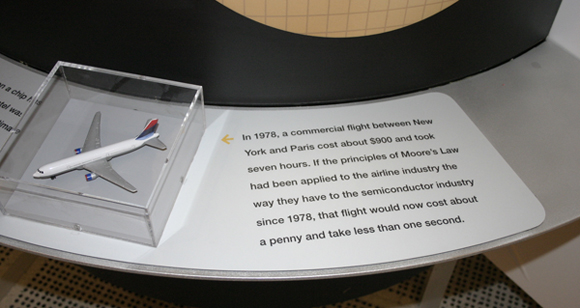If Air Travel Worked Like Health Care
 The video below makes fun of the health care industry, asking what if air travel worked like health care? It’s a satirical look at what the airline industry would be like if it worked the same way.
The video below makes fun of the health care industry, asking what if air travel worked like health care? It’s a satirical look at what the airline industry would be like if it worked the same way.
Neither industry, however, has shown the same innovation & improvement as the computer industry, which I come from as a retired IBM technologist. To put that statement into perspective, here are some observations.
Moore’s Law and Air Travel
According to Intel, “In 1978, a commercial flight between New York and Paris cost $900 and took seven hours. If the principles of Moore’s Law had been applied to the airline industry the way they have to the semiconductor industry since 1978, that flight would now cost about a penny and take less than one second.” And if you could fit inside, the plane would be less than two inches long.
Moore’s Law, named after Intel co-founder Geoffrey Moore, observes that tech innovation occurs exponentially with electronics getting 2x faster, 2x cheaper and 2x smaller every two years or less. The observation has held true for some 50 years and affects processing speed, memory capacity, sensors and even the number and size of pixels in digital cameras.
What if Air Travel worked like Health Care?
Moore’s Law and Health Care
But what if healthcare innovations occurred at the same pace? Why are costs rising instead of falling? Why don’t we even know the costs ahead of time so we can comparison shop and promote competition?
Stephen Brill’s 38-page report for TIME Magazine, “Bitter Pill: Why High Medical Bills Are Killing Us,” explores the perverse profit motives that keep costs up. Unfortunately, the full article is now behind a pay-wall, but I posted a summary and a video interview with the author.
“Moore’s Law and the FUTURE of Health Care” is a white paper I wrote from the perspective of an IBM technologist and futurist. It looks at the convergence of information science (processors & networks), biology (chemistry, genes & proteins), cognitive & neuroscience (neuron signaling), and nano technology. And like Brill’s article, it critiques the health care industry and how the incentives promote profit from disease management rather than health & wellness.
